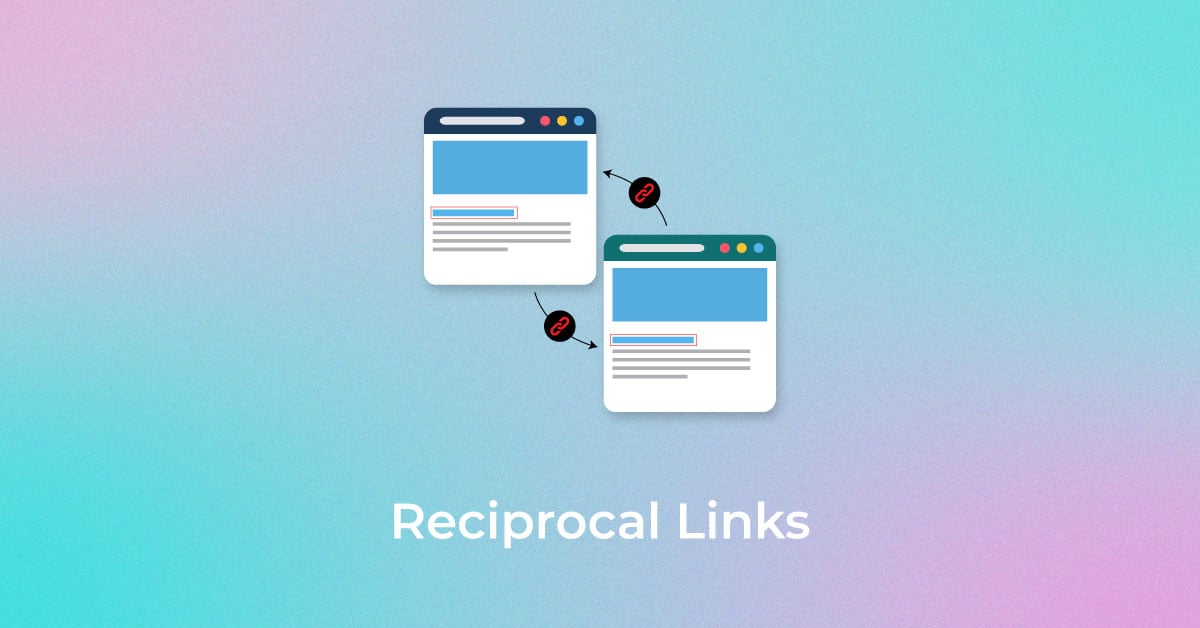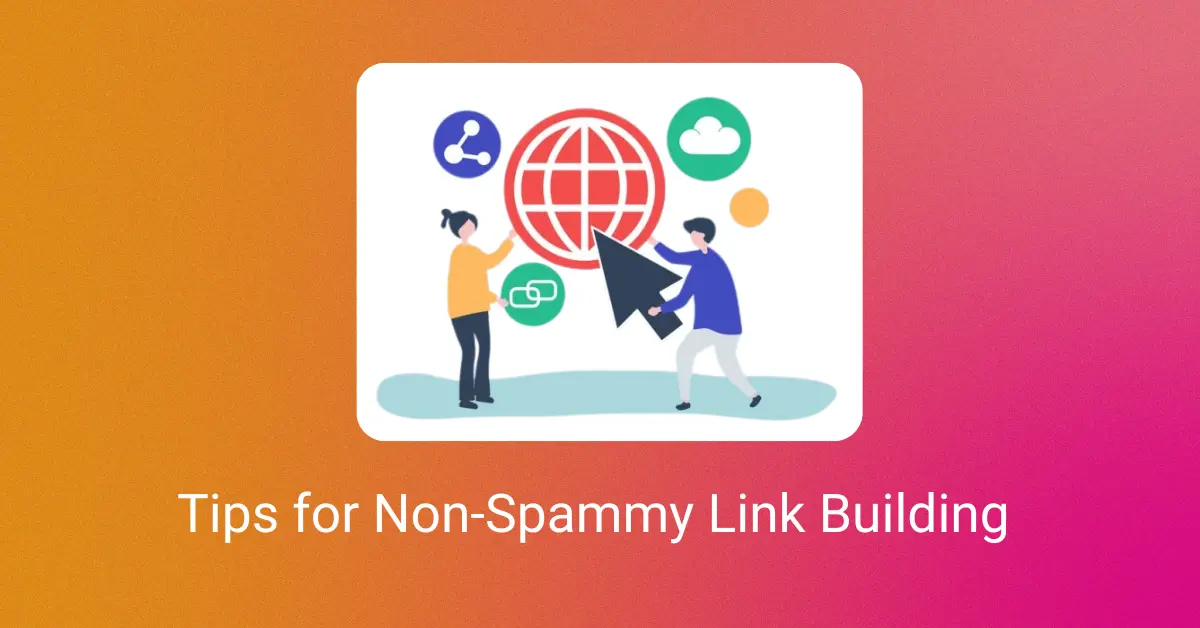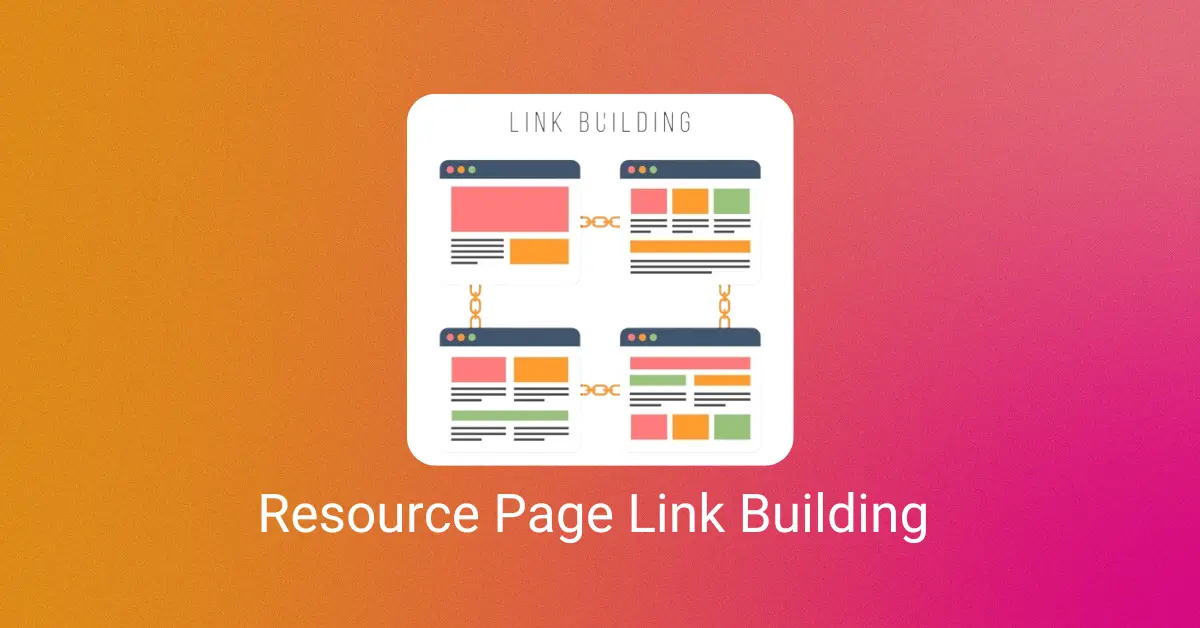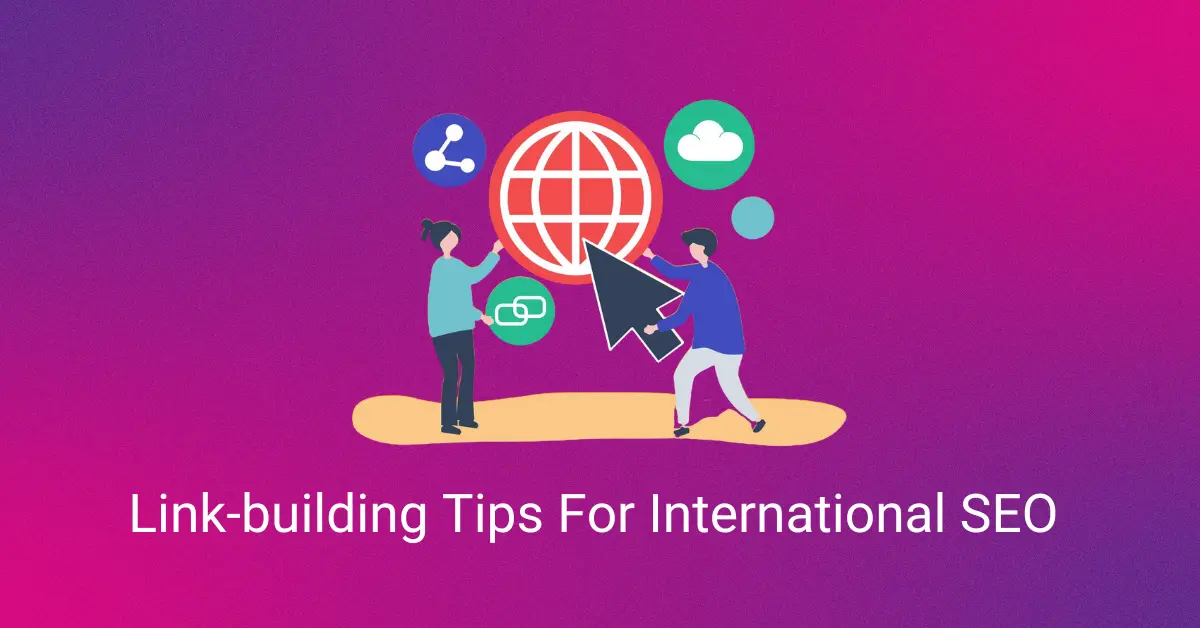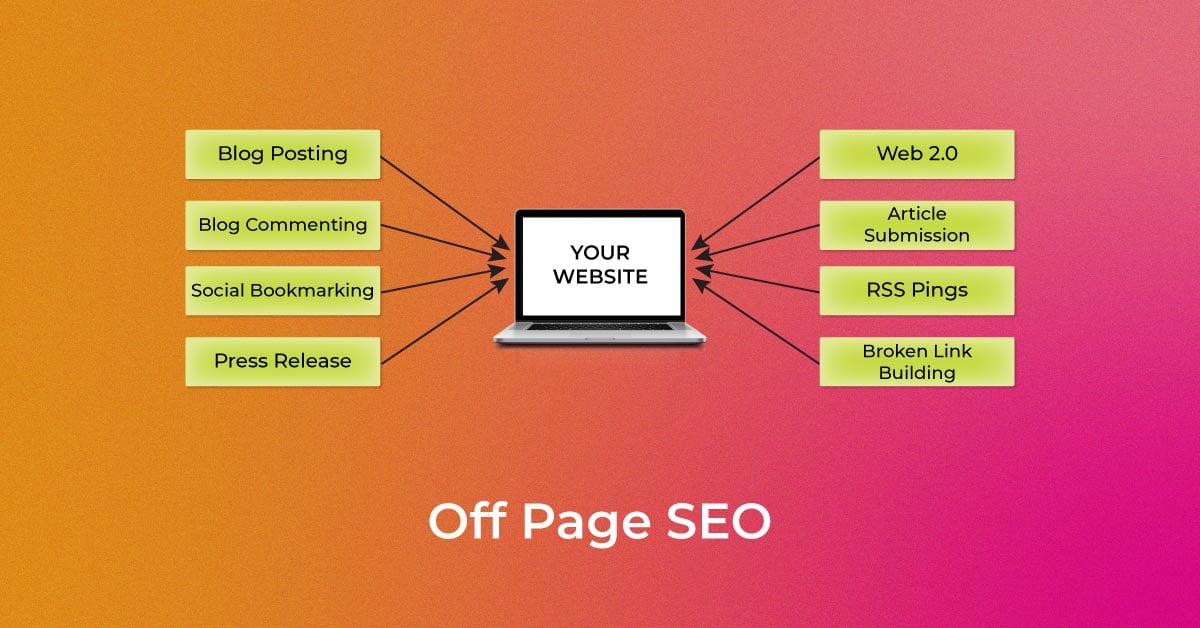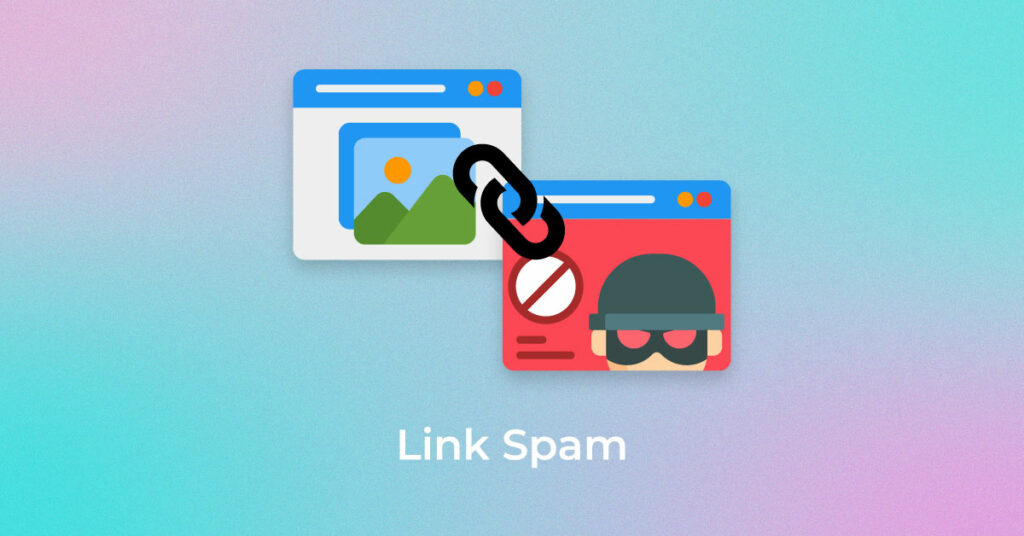What is link spam?
Have you ever come across embedded links in posts that redirect you to some page that the post was not even related to? You can find these links everywhere on social media, and they are spammy links.
Link spams are used by brands to embed links into posts for promoting their content, regardless of what the post is about or where it was posted. This process is quite popular amongst social media channels and is usually used by businesses to increase the number of external backlinks to their website in order to improve their SERP rankings.
Spammy links are mostly used by businesses for their money-making web pages or cornerstone content. Since the number of external backlinks can improve the rankings of web pages, this is a common practice employed by site owners.
However, link spamming does not affect other ranking factors by search engines for web pages. They offer zero additional value in terms of increasing the quality metrics of the linked page. Search engine algorithms do not judge the quality of a page with link spam, and neither do the readers. This is why link spamming should be executed very carefully by site owners to ensure that it does not send a negative signal to search engine algorithms about your website.
So, what types of link spamming should you avoid in order to stay safe? Let us find out.
Types of Link Spam to Avoid
1. Cleansing Domains
Also referred to as “301”, cleansing domains are a form of link manipulation that is regarded as a “black-hat SEO” technique. The chances of your actions being discovered and penalised by search engines with black hat techniques are very high, so this is a very risky link spamming technique.
This technique basically uses the redirect method in which new links to any domain are redirects, which is not natural link behaviour. Just because it can go undetected now does not mean it will remain that way. If Google finds out you are employing this method, actions like Penguin (turning 301 redirects to 404 immediately) are taken.
2. Article Marketing
Low-quality content in itself indicates to search engines that a website should not be ranked high. But article marketing takes it to a whole new level. Do not make articles with the only purpose of getting a link. If all your followed links on the website are self-generated and not endorsed by external and authoritative sources, it might prove to be harmful to your rankings and diminish user experience as well. It is suggested to not invest in creating mundane or low-quality articles just for the sake of generating links.
3. Single-Post Blogs
Single post blogs are also termed Web 2.0 Blogs. These are generally small blog pages on sub-domains of platforms like WordPress or Tumblr which are already not performing well. These are usually freehubs for content, with the sole purpose of acting as “link juice” for websites through social bookmarking.
Basically, replacing links that have no impact on your page with links that host decent-looking content would not accomplish anything. It is quite easy for Google to weed out these spammy links, as they are already underperforming.
4. Site-Wide Links
This used to be a widespread practice employed by almost everyone just a few years ago. Site-wide links are usually used in the footer section of web pages, which are paid links or Google Bombs.
This practice was crippled by Google as it employed the Penguin action to the overuse of any type of anchor text with paid links on websites. This practice is no longer safe and should not be used by site owners.
5. Paid Links
While there are no foolproof methods to detect every single paid link on pages, link spamming them might become an issue for you. Search engines can easily detect the footprints of paid links on pages if they are done in bulk.
The game here is to not make it obvious for the search engine algorithms. You have to entrust in the sellers that they are not linked spamming your paid links. Make sure that all your buyers of links follow this, as if even one of them buys links in bulk, it can be easily detected and be tracked back to your website.
6. Link Exchanges
Exchanging links is a safe practice, but yet again, it should not be done in bulk. This process requires you to put faith in complete strangers to acquire external links for your website. This is often termed as a “link wheel”.
Link wheels are a very risky way to acquire links as they are only as strong as the weakest links. If you are smart and careful enough to create valuable content, then you can generate much better results with the content, with little to no risks compared to link exchange.
7. Link Bait and Switch
Tricking users into visiting pages they do not wish to visit is clearly not a good practice. Search engines do not appreciate this tactic and flag or penalise you for doing this. The bounce rates for linkbait and switch techniques are very high and often lead to frustrated users reporting your pages.
This is not done too often but is a bad practice to follow by all standards. Instead, use ethical methods to promote your links in bulk like smart links, which can generate repeat success for your pages.
8. Low-Quality Press Release Syndication
Press releases should be of high quality and convey the brand message accurately. This is why high-quality syndication services come with fact-checking, comprehensive editorial guidelines, and costs. On the other hand, low-quality syndication providers do not check the content. This leads to the links not getting indexed at all by search engines or counted very low on ranking factors.
Make sure to not use these service providers to publish press releases, as they will not generate good results for your brand and might even end up reducing your rankings on SERPs.
9. Directory Spam
There is an oversaturation of directories on the internet, and search engines like Google have stopped giving any attention to links on many of them. In the best-case scenario, the lower-ranking directories will help you only a little bit. How can you identify which directories to not choose? Just ask this question – Are the listings on this directory website quality sites and will they ask for money to be listed? If the answer is no to either part of this question, it is not worth spamming your links on these directories.
10. Link Farms
If two or more site owners cooperate and share links with each other to put them up on their websites, then it is called link farming. Link farms are used by site owners to build multiple backlinks for their websites. However, this practice is not considered authoritative by search engine algorithms.
What ends up happening is that the backlink profile of link farmers are not indexed. In the case of extreme spamming, sometimes the entire site can be flagged as spam by search engines.
11. Forum Spam
Forums are also a place where you can find a lot of links. However, their effect has basically been null and voided by search engines. When you post follow or no-follow links on forums, it has zero effect on your link-building authority.
For instance, forums on Bing’s webmaster have become a cesspool of anchor texts and phrases marked with spammy links, but they do not carry any weight as authentic or authoritative links.
12. Profile Spam
Links posted on authority domains often go through a phase of unintended follow links, which makes profile spam another victim of link spamming. This type of link spamming is abundantly present throughout the web. Search engines like Google find it difficult to impose any tough limits or actions on profiles as it prevents the imitators and spammers from exploiting a brand’s name.
13. Comment Spam
Websites with authority have started using classifiers in their comment sections to weed out any link spam. Classifiers devalue any links posted in the comment sections. So, if you post any links on an active blog that has about 500 comments, you already would not generate any value from 1/500th of the link juice on the blog. But a classifier will even take that away and your links would not have any value whatsoever.
14. Hidden Links
Have you ever come across blogs or articles with hidden hyperlinks in the texts? These are called hidden links. Hidden links can be put in texts, images, or the site code of the website so that the algorithm can detect them. Linking conversion pages in these hidden links is a common practice but can be a bad experience for users who did not want to be redirected to another page.
15. No-follow Links
If you have an abundant number of nofollow links on your page, search engine algorithms will consider them as link spamming. There are automated link-building software out there that try to do this by using random links to improve the site’s backlink profile to avoid getting detected by Google spam detectors.
But since Google released its Penguin update, it has become very hard to do this. Penguin evaluates all the links on the website based on their context and quality, rather than focusing on quantity. This makes it almost impossible to go undetected with nofollow link spamming.
How to Recover from Link Spam Penalties?
As a site owner, you should be aware of the manual action notification that can be sent by search engines. For Google, this notification comes in GSC. If you ever receive this notification, chances are that your site is flagged for link spamming. You might even notice a traffic crash on your site to detect this. But that does not mean that it is irredeemable.
To recover from link spam penalties, you can take two approaches:
- Stop any and all link spamming activities immediately. If your spam posts are old and dated, Google’s algorithms would be more willing to ignore them while they assess your SERP rankings.
- Perform a thorough SEO audit of your website. This will help you in understanding the exact reason why your site is underperforming. After the audit, if link spams come out to be the reason, you can use the disavow tool on unnaturally placed links or penalised links. The SEO audit will highlight these links for you, and the disavow tool can help you in taking care of them.
Link Spams – Are they Worth it?
The simple answer to this question is no. While link spams, if done carefully, can generate mild results for your site, they are not worth the effort. Black-hat SEO techniques can only take your site so far before being flagged by search engines.
It is always a good idea to employ white-hat SEO and ensure there is no resemblance to black-hat techniques. The risks of link spamming outweigh the benefits by a lot. Include the time and resources it takes to execute link spamming, and it ultimately becomes a big waste of time for the site. Consider opportunity costs – What else could you do or invest in which is safe and will bring better results for your website?
Popular Searches
How useful was this post?
0 / 5. 0










